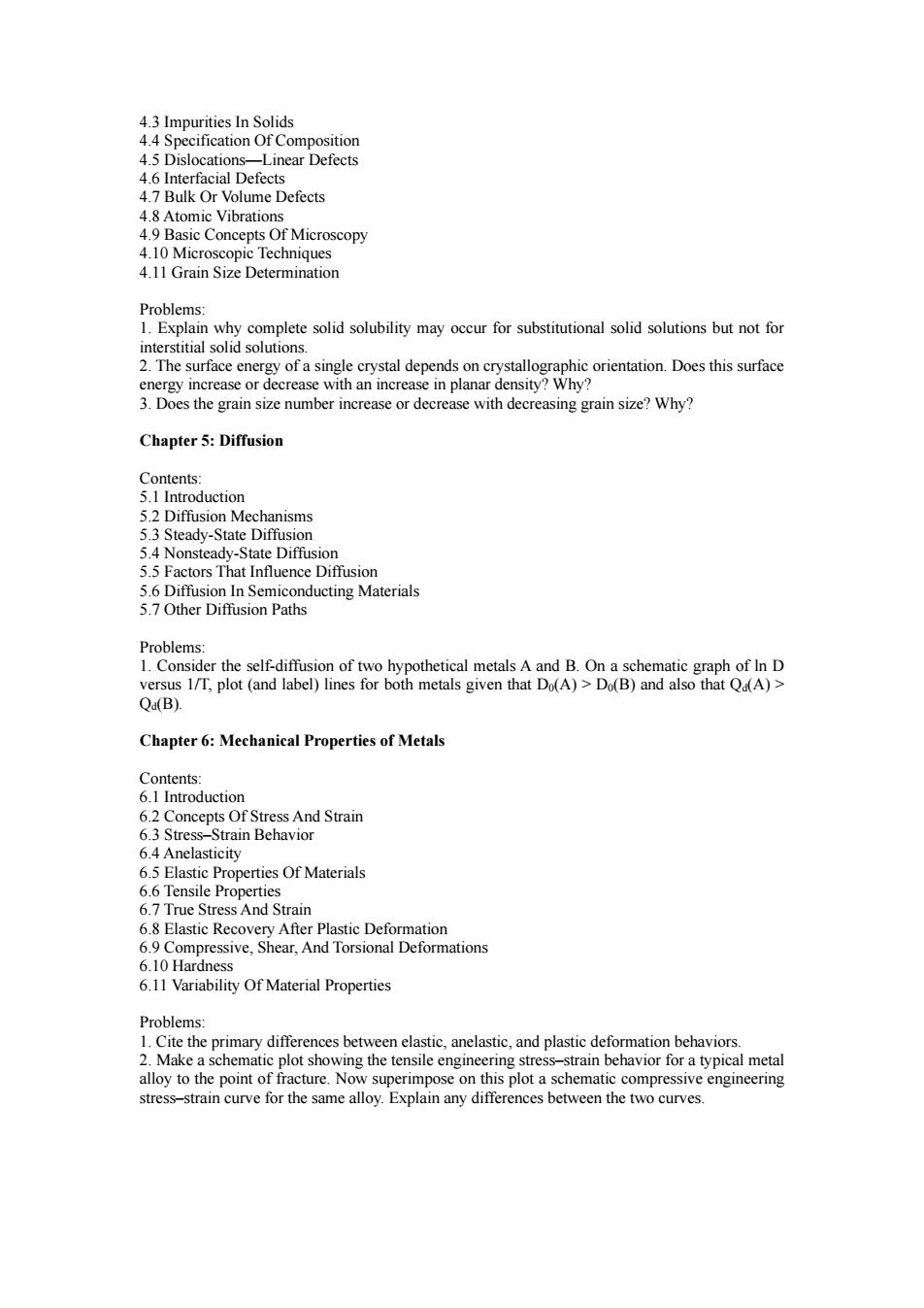正在加载图片...

4 Bulk 4 Basic Concepts of Microscopy Pmobkcn pletesolid solubility may ccur for substitutional solid solutions but not for y fa sinle cyds ontDe h decreasing grain size?Why? Chapter 5:Diffusion Contents: .3 Steady-State Diffu S.4 Nonst eady-Sta Di伍 56 Diffusion In Semic 5.7 Other Diffusion Paths Problems 1.Consider the self-diffu Ca(B) 171,plot (and abel)lines h metals given t Chapter6:Mechanical Properties of Metal Contents: 6)lntroductior ss And Strain ties Of Materials 6.7True Stress And Strain 69c And nations 6.10 Hardness 6.11 Variability Of Material Properties Problems: alloy to the point of fracture.Now superimpose on this plot a schematic compressive stress-strain curve for the same alloy.Explain any differences between the two curves. 4.3 Impurities In Solids 4.4 Specification Of Composition 4.5 Dislocations—Linear Defects 4.6 Interfacial Defects 4.7 Bulk Or Volume Defects 4.8 Atomic Vibrations 4.9 Basic Concepts Of Microscopy 4.10 Microscopic Techniques 4.11 Grain Size Determination Problems: 1. Explain why complete solid solubility may occur for substitutional solid solutions but not for interstitial solid solutions. 2. The surface energy of a single crystal depends on crystallographic orientation. Does this surface energy increase or decrease with an increase in planar density? Why? 3. Does the grain size number increase or decrease with decreasing grain size? Why? Chapter 5: Diffusion Contents: 5.1 Introduction 5.2 Diffusion Mechanisms 5.3 Steady-State Diffusion 5.4 Nonsteady-State Diffusion 5.5 Factors That Influence Diffusion 5.6 Diffusion In Semiconducting Materials 5.7 Other Diffusion Paths Problems: 1. Consider the self-diffusion of two hypothetical metals A and B. On a schematic graph of ln D versus 1/T, plot (and label) lines for both metals given that D0(A) > D0(B) and also that Qd(A) > Qd(B). Chapter 6: Mechanical Properties of Metals Contents: 6.1 Introduction 6.2 Concepts Of Stress And Strain 6.3 Stress–Strain Behavior 6.4 Anelasticity 6.5 Elastic Properties Of Materials 6.6 Tensile Properties 6.7 True Stress And Strain 6.8 Elastic Recovery After Plastic Deformation 6.9 Compressive, Shear, And Torsional Deformations 6.10 Hardness 6.11 Variability Of Material Properties Problems: 1. Cite the primary differences between elastic, anelastic, and plastic deformation behaviors. 2. Make a schematic plot showing the tensile engineering stress–strain behavior for a typical metal alloy to the point of fracture. Now superimpose on this plot a schematic compressive engineering stress–strain curve for the same alloy. Explain any differences between the two curves